 Actividades
Actividades
What is Computational Mathematics and ICME for you?
Gianluca Iaccarino, Director, Institute for Computational Mathematical Engineering (ICME). Professor, Mechanical Engineering Department, Stanford University.
Lunes 28 de noviembre de 2022, 13 hrs. (Presencial en Auditorio San Agustín).
ABSTRACT
The Institute for Computational and Mathematical Engineering (ICME) at Stanford University is an interdisciplinary graduate program (granting Masters and PhDs) at the intersection of mathematics, computing, and science and engineering. ICME was established in 2004, is part of Stanford School of Engineering and provides a link between fundamental mathematics/statistical sciences, computer science and engineering applications. In ICME:
- We design state-of-the-art mathematical and computational models, methods and algorithms.
- We collaborate closely with engineers and scientists in academia and industry to develop improved computational approaches and advance disciplinary fields.
- We train students and scholars in mathematical modeling, scientific computing and advanced computational algorithms.
In this talk I will give an overview of ICME, and give examples of recent research activities highlighting ICME students.
Link de inscripción: https://forms.gle/YcQYNVfWvMr4end29
Pseudo-spectral methods in room acoustics simulations
Carlos Spa, Computer Applications in Science and Engineering (CASE) Department, Barcelona Supercomputing Center (BSC-CNS).
Miércoles 19 de octubre de 2022, 13 hrs. (Presencial en Auditorio San Agustín; Link Zoom disponible escribiendo a Esta dirección de correo electrónico está siendo protegida contra los robots de spam. Necesita tener JavaScript habilitado para poder verlo.)
ABSTRACT
Room acoustics is the science concerned to study the behavior of sound waves in enclosed rooms. The acoustic information of any room, the so-called impulse response, is expressed in terms of the acoustic field as a function of space and time. In general terms, it is nearly impossible to find analytical impulse responses of real rooms. Therefore, in recent years, the use of computers for solving this type of problems has emerged as a proper alternative to calculate these responses. In this talk, we focus on the analysis of the wave-based methods in the time-domain. More concretely, we study in detail the main formulations of Finite-Difference methods, which have been widely used in many room acoustics applications, and the recently proposed Fourier Pseudo-Spectral methods. Both methods are studied and compared in the three different contexts: the wave propagation, the source generation and the locally reacting boundary conditions.
Seminario: "Energy storage management strategies under uncertain generation: combining prediction and optimization"
Rodrigo Carrasco, Departamento de Ingeniería Industrial y de Sistemas e Instituto de Ingeniería Matemática y Computacional, Pontificia Universidad Católica de Chile.
Miércoles 28 de septiembre de 2022, 13 hrs. (Presencial en Auditorio San Agustín; Link Zoom disponible escribiendo a Esta dirección de correo electrónico está siendo protegida contra los robots de spam. Necesita tener JavaScript habilitado para poder verlo.)
ABSTRACT
This work presents a novel approach to scheduling storage units in a photovoltaic generation system based on stochastic optimization. A common approach to take advantage of historical data for stochastic optimization has been to use machine learning techniques to compute relevant scenarios. Instead of this “predict THEN optimize” strategy, we show that using a combined “predict AND optimize” approach results in better recommendations. The resulting scenarios capture the relevant effects on the decision process and not just data features. We show experimental results applied to a real-life control system with limited computation capacity and further validate our results by testing the resulting schedules in an actual prototype.
Seminario: "The power of graph neural networks"
Juan Reutter, Departamento de Ciencia de la Computación, Pontificia Universidad Católica de Chile.
Miércoles 24 de agosto de 2022, 13 hrs. (Presencial en Auditorio San Agustín; Link Zoom disponible escribiendo a Esta dirección de correo electrónico está siendo protegida contra los robots de spam. Necesita tener JavaScript habilitado para poder verlo.)
ABSTRACT
The power of Graph Neural Networks (GNNs) is commonly measured in terms of their ability to separate graphs: a GNN is more powerful when it can recognize more graphs as being different. Studying this metric in GNNs helps in understanding the limitations of GNNs for graph learning tasks, but there are few general techniques for doing this, and most results in this direction are geared at specific GNN architectures.
In this talk I will review our recent work in studying the separation power of GNNs. Our approach is to view GNNs as expressions specified in procedural languages that describe the computations in the layers of the GNNs, and then analyze these expressions to obtain bounds on the separation power of said GNNs. As we see, this technique gives us an elegant way to easily obtain bounds on the separation power of GNNs in terms of the Weisfeiler-Leman (WL) tests, which have become the yardstick to measure the separation power of GNNs. If time permits, I will also review some of the by-products of our characterization, including connections to logic and approximation results for GNNs.
Seminario: Optimal Algorithms for Stochastic Complementary Composite Minimization
Clement Lezane, University of Twente.
Viernes 14 de octubre de 2022, 13 hrs. (Presencial en Auditorio San Agustín; Link Zoom disponible escribiendo a Esta dirección de correo electrónico está siendo protegida contra los robots de spam. Necesita tener JavaScript habilitado para poder verlo.)
ABSTRACT
Inspired by regularization techniques in statistics and machine learning, we study complementary composite minimization in the stochastic setting. This problem corresponds to the minimization of the sum of a (weakly) smooth function endowed with a stochastic first-order oracle, and a structured uniformly convex (possibly nonsmooth and non-Lipschitz) regularization term. Despite intensive work on closely related settings, prior to our work no complexity bounds for this problem were known. We close this gap by providing novel excess risk bounds, both in expectation and with high probability. Our algorithms are nearly optimal, which we prove via novel lower complexity bounds for this class of problems. We conclude by providing numerical results comparing our methods to the state of the art.
